#Technological Museums
Explore tagged Tumblr posts
Text
17 Museums In Dubai: Technological And Historical Treasures

17 Museums In Dubai: Technological And Historical Treasures showcases Dubai's diverse cultural landscape. Explore ancient artifacts, modern innovations, and rich historical narratives across these museums. From traditional heritage sites to interactive technological marvels, this guide illuminates the city's dynamic blend of past and present, appealing to enthusiasts of all ages.
#Museums in Dubai#Best Museums in Dubai#Top Museums in Dubai#Dubai Cultural Attractions#Technological Museums#Historical Landmarks In Dubai#Museum Of The Future#Dubai Heritage Sites
1 note
·
View note
Photo

📺 Retro Futurism: 'Videosphere TV set' (1970-71) by Victor Company of Japan (JVC). A pioneer of home entertainment, displayed at Museum für Angewandte Kunst Köln. Original title: 'Videosphere TV set'
#70s#design#retro#japanese#technology#product design#1970#museum für angewandte kunst köln#victor company of japan#industrial#jvc#futurism#minimalist
710 notes
·
View notes
Text
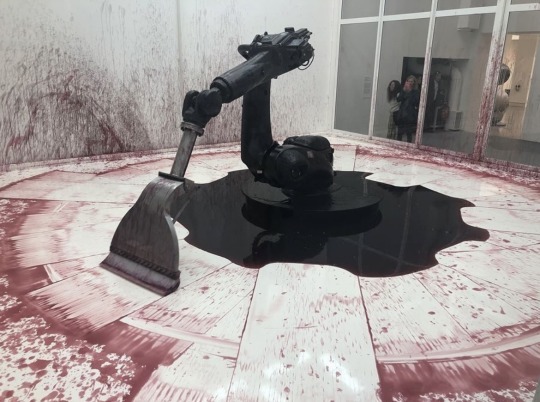
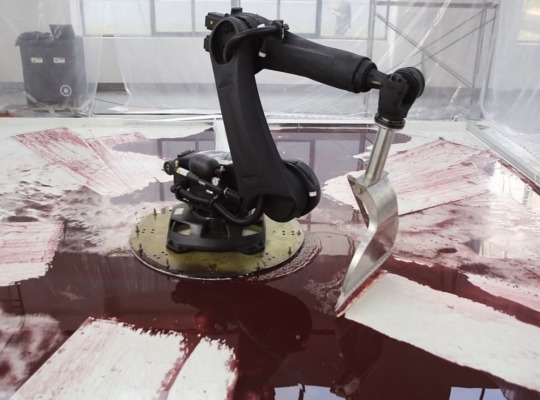

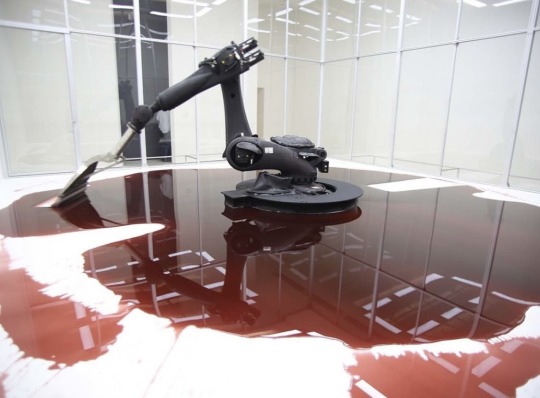
Sun Yuan & Peng Yu: Can't Help Myself (2016)
#sun yuan#peng yu#blood#bloody#bloodcore#gorecore#art#art exhibition#japan#tech#technology#museum#aesthetic#horrorcore#weirdcore#lovecore#sculpture#techcore#machina
494 notes
·
View notes
Text

🇺🇸 Back in the early 2000s, the America Online (AOL) Mobile Communicator was a groundbreaking device.
📲 Housed in its distinct pink bag, the device boasted a battery that expired in 2004 and came with those iconic AOL CDs offering 700 free hours of internet – a true blast from the past!
📟 Opening the device revealed the exceptional build quality typical of RIM products. It featured a built-in AOL Instant Messenger (AIM), allowing users to stay connected with friends and family through instant messaging.
📧 AIM was a key player in the messaging scene back then, making this device not just a communicator but a social hub.
#techtime chronicles#old technology#old tech#tech#technology#companies#electronics#information technology#technews#corporations#blackberry#rim#aim messenger#instant messenger#america online#aol#save icq#icq museum#icq new#icqforever#icq#early web#old internet#old web#old computers#y2k aesthetic#y2k style#y2k#portable devices#gadgets
283 notes
·
View notes
Text

Research Lab, Louvre Museum (1986)
312 notes
·
View notes
Text
April 14, Xi'an, China, Shaanxi History Museum, Qin and Han Dynasties Branch (Part 3 – Innovations and Philosophies):
(Edit: sorry this post came out so late, I got hit by the truck named life and had to get some rest, and this post in itself took some effort to research. But anyway it's finally up, please enjoy!)
A little background first, because this naming might lead to some confusions.....when you see location adjectives like "eastern", "western", "northern", "southern" added to the front of Zhou dynasty, Han dynasty, Song dynasty, and Jin/晋 dynasty, it just means the location of the capital city has changed. For example Han dynasty had its capital at Chang'an (Xi'an today) in the beginning, but after the very brief but not officially recognized "Xin dynasty" (9 - 23 AD; not officially recognized in traditional Chinese historiography, it's usually seen as a part of Han dynasty), Luoyang became the new capital. Because Chang'an is geographically to the west of Luoyang, the Han dynasty pre-Xin is called Western Han dynasty (202 BC - 8 AD), and the Han dynasty post-Xin is called Eastern Han dynasty (25 - 220 AD). As you can see here, in these cases this sort of adjective is simply used to indicate different time periods in the same dynasty.
Model of a dragonbone water lift/龙骨水车, Eastern Han dynasty. This is mainly used to push water up to higher elevations for the purpose of irrigation:
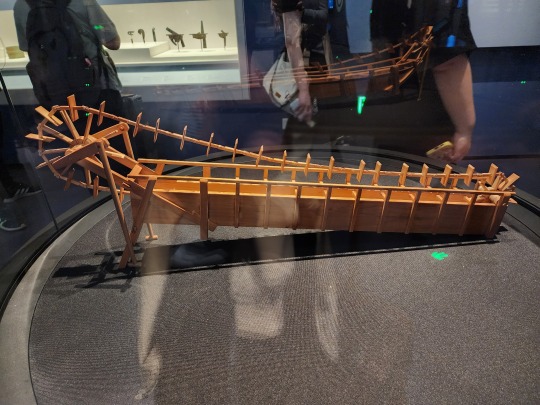
Model of a water-powered bellows/冶铁水排, Eastern Han dynasty. Just as the name implies, as flowing water pushes the water wheel around, the parts connected to the axle will pull and push on the bellows alternately, delivering more air to the furnace for the purpose of casting iron.
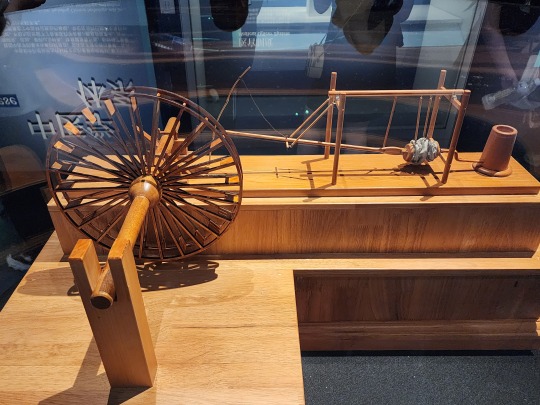
The Nine Chapters on the Mathematical Art/《九章算术》, Fangcheng/方程 chapter. It’s a compilation of the work of many scholars from 10 th century BC until 2 nd century AD, and while the earliest authors are unknown, it has been edited and supplemented by known scholars during Western Han dynasty (also when the final version of this book was compiled), then commented on by scholars during Three Kingdoms period (Kingdom of Wei) and Tang dynasty. The final version contains 246 example problems and solutions that focus on practical applications, for example measuring land, surveying land, construction, trading, and distributing taxes. This focus on practicality is because it has been used as a textbook to train civil servants. Note that during Han dynasty, fangcheng means the method of solving systems of linear equations; today, fangcheng simply means equation. For anyone who wants to know a little more about this book and math in ancient China, here’s an article about it. (link goes to pdf)

Diagram of a circle in a right triangle (called “勾股容圆” in Chinese), from the book Ceyuan Haijing/《测圆海镜》 by Yuan-era mathematician Li Ye/李冶 (his name was originally Li Zhi/李治) in 1248. Note that Pythagorean Theorem was known by the name Gougu Theorem/勾股定理 in ancient China, where gou/勾 and gu/股 mean the shorter and longer legs of the right triangle respectively, and the hypotenuse is named xian/弦 (unlike what the above linked article suggests, this naming has more to do with the ancient Chinese percussion instrument qing/磬, which is shaped similar to a right triangle). Gougu Theorem was recorded in the ancient Chinese mathematical work Zhoubi Suanjing/《周髀算经》, and the name Gougu Theorem is still used in China today.
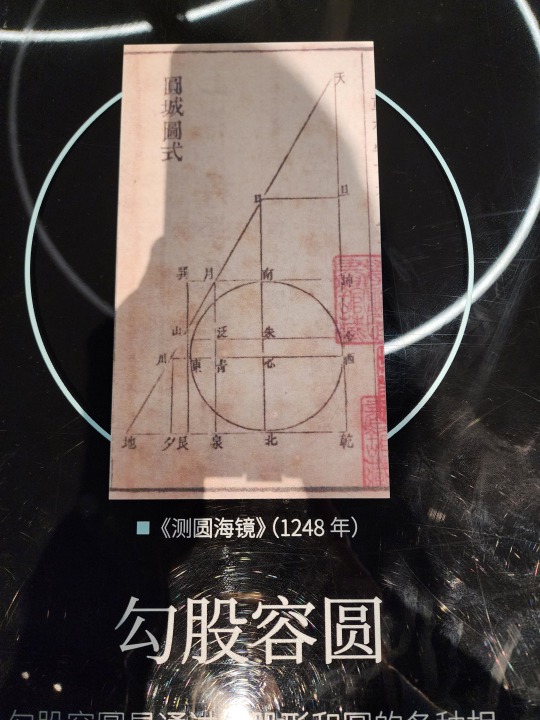
Diagram of the proof for Gougu Theorem in Zhoubi Suanjing. The sentence on the left translates to "gou (shorter leg) squared and gu (longer leg) squared makes up xian (hypotenuse) squared", which is basically the equation a² + b² = c². Note that the character for "squared" here (mi/幂) means "power" today.

This is a diagram of Zhang Heng’s seismoscope, called houfeng didong yi/候风地动仪 (lit. “instrument that measures the winds and the movements of the earth”). It was invented during Eastern Han dynasty, but no artifact of houfeng didong yi has been discovered yet, this is presumably due to constant wars at the end of Eastern Han dynasty. All models and diagrams that exist right now are what historians and seismologists think it should look like based on descriptions from Eastern Han dynasty. This diagram is based on the most popular model by Wang Zhenduo that has an inverted column at the center, but this model has been widely criticized for its ability to actually detect earthquakes. A newer model that came out in 2005 with a swinging column pendulum in the center has shown the ability to detect earthquakes, but has yet to demonstrate ability to reliably detect the direction where the waves originate, and is also inconsistent with the descriptions recorded in ancient texts. What houfeng didong yi really looks like and how it really works remains a mystery.
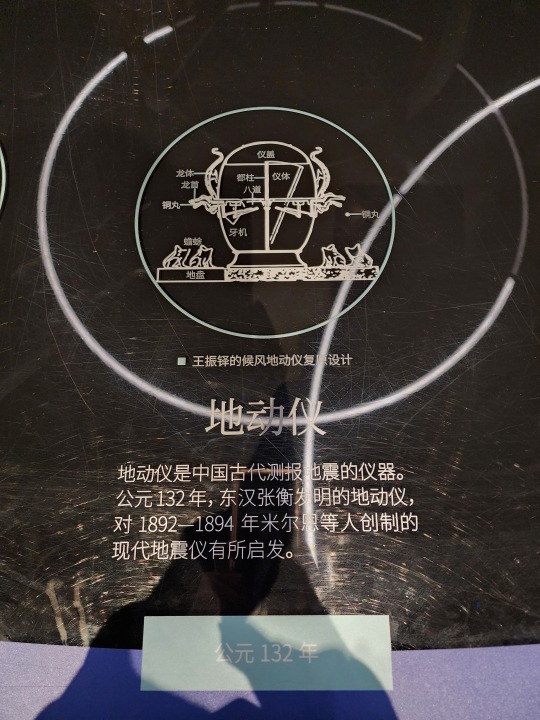
Xin dynasty bronze calipers, the earliest sliding caliper found as of now (not the earliest caliper btw). This diagram is the line drawing of the actual artifact (right).
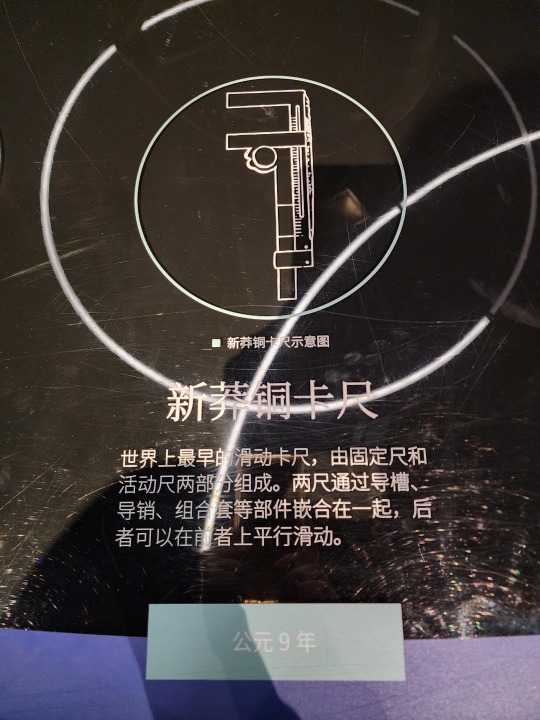

Ancient Chinese "Jacquard" loom (called 提花机 or simply 花机 in Chinese, lit. "raise pattern machine"), which first appeared no later than 1st century BC. The illustration here is from the Ming-era (1368 - 1644) encyclopedia Tiangong Kaiwu/《天工开物》. Basically it's a giant loom operated by two people, the person below is the weaver, and the person sitting atop is the one who controls which warp threads should be lifted at what time (all already determined at the designing stage before any weaving begins), which creates patterns woven into the fabric. Here is a video that briefly shows how this type of loom works (start from around 1:00). For Hanfu lovers, this is how zhuanghua/妆花 fabric used to be woven, and how traditional silk fabrics like yunjin/云锦 continue to be woven. Because it is so labor intensive, real jacquard silk brocade woven this way are extremely expensive, so the vast majority of zhuanghua hanfu on the market are made from machine woven synthetic materials.
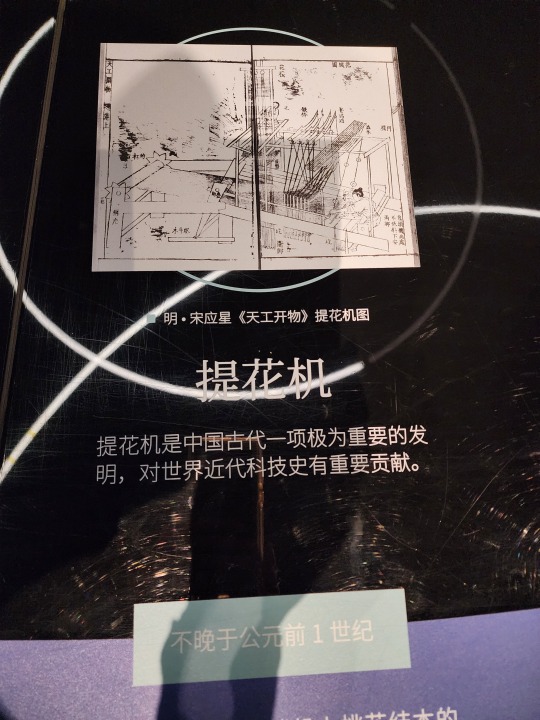
Chinese purple is a synthetic pigment with the chemical formula BaCuSi2O6. There's also a Chinese blue pigment. If anyone is interested in the chemistry of these two compounds, here's a paper on the topic. (link goes to pdf)

A list of common colors used in Qin and Han dynasties and the pigments involved. White pigment comes from chalk, lead compounds, and powdered sea shells; green pigment comes from malachite mineral; blue pigment usually comes from azurite mineral; black comes from pine soot and graphite; red comes from cinnabar; ochre comes from hematite; and yellow comes from realgar and orpiment minerals.
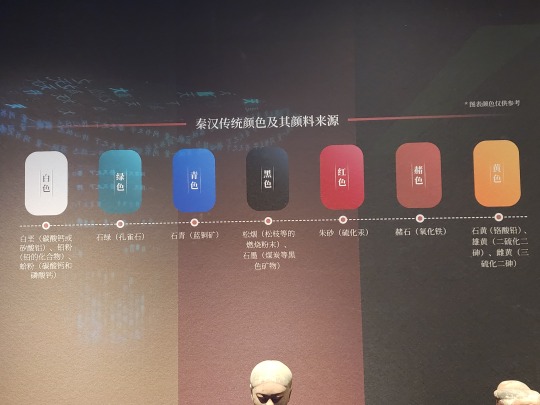
Also here are names of different colors and shades during Han dynasty. It's worth noting that qing/青 can mean green (ex: 青草, "green grass"), blue (ex: 青天, "blue sky"), any shade between green and blue, or even black (ex: 青丝, "black hair") in ancient Chinese depending on the context. Today 青 can mean green, blue, and everything in between.
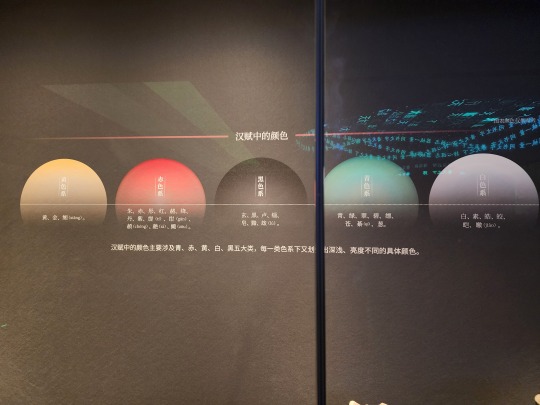
Western Han-era bronze lamp shaped like a goose holding a fish in its beak. This lamp is interesting as the whole thing is hollow, so the smoke from the fire in the lamp (the fish shaped part) will go up into the neck of the goose, then go down into the body of the goose where there's water to catch the smoke, this way the smoke will not be released to the surrounding environment. There are also other lamps from around the same time designed like this, for example the famous gilt bronze lamp that's shaped like a kneeling person holding a lamp.
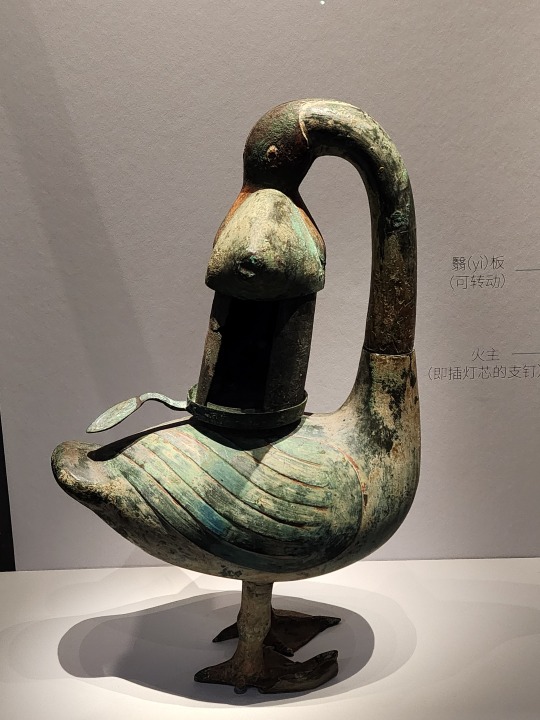
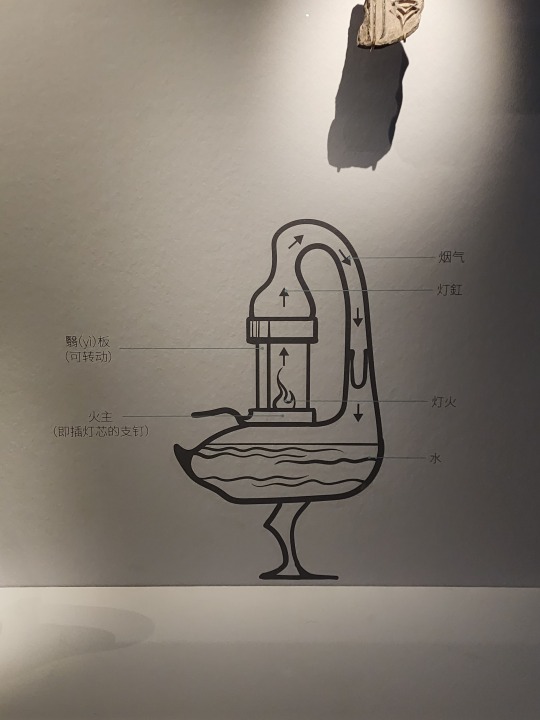
Part of a Qin-era (?) clay drainage pipe system:
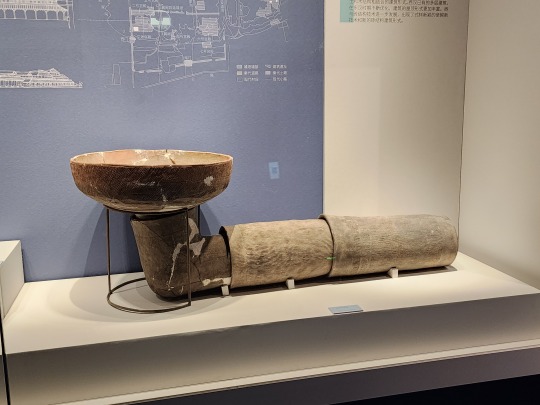
A list of canals that was dug during Warring States period, Qin dynasty, and pre-Emperor Wu of Han Han dynasty (475 - 141 BC). Their purposes vary from transportation to irrigation. The name of the first canal on the list, Hong Gou/鸿沟, has already become a word in Chinese language, a metaphor for a clear separation that cannot be crossed (ex: 不可逾越的鸿沟, meaning "a gulf that cannot be crossed").

Han-era wooden boat. This boat is special in that its construction has clear inspirations from the ancient Romans, another indication of the amount of information exchange that took place along the Silk Road:
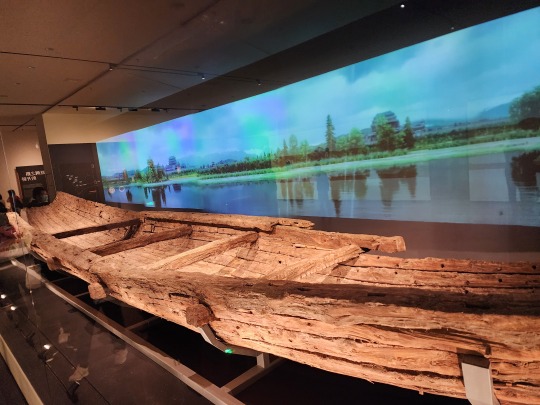
A model that shows how the Great Wall was constructed in Qin dynasty. Laborers would use bamboo to construct a scaffold (bamboo scaffolding is still used in construction today btw, though it's being gradually phased out) so people and materials (stone bricks and dirt) can get up onto the wall. Then the dirt in the middle of the wall would be compressed into rammed earth, called hangtu/夯土. A layer of stone bricks may be added to the outside of the hangtu wall to protect it from the elements. This was also the method of construction for many city walls in ancient China.
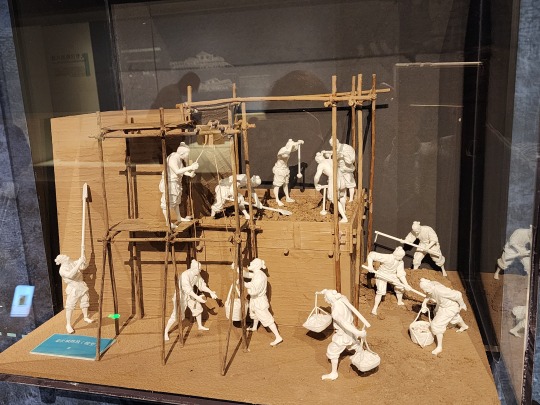
A list of the schools of thought that existed during Warring States period, their most influential figures, their scholars, and their most famous works. These include Confucianism (called Ru Jia/儒家 in Chinese; usually the suffix "家" at the end denotes a school of thought, not a religion; the suffix "教" is that one that denotes a religion), Daoism/道家, Legalism (Fa Jia/法家), Mohism/墨家, etc.

The "Five Classics" (五经) in the "Four Books and Five Classics" (四书五经) associated with the Confucian tradition, they are Shijing/《诗经》 (Classic of Poetry), Yijing/《易经》 (also known as I Ching), Shangshu/《尚书》 (Classic of History), Liji/《礼记》 (Book of Rites), and Chunqiu/《春秋》 (Spring and Autumn Annals). The "Four Books" (四书) are Daxue/《大学》 (Great Learning), Zhongyong/《中庸》 (Doctrine of the Mean), Lunyu/《论语》 (Analects), and Mengzi/《孟子》 (known as Mencius).
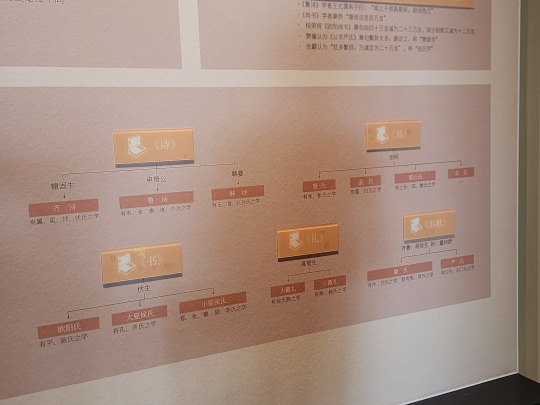
And finally the souvenir shop! Here's a Chinese chess (xiangqi/象棋) set where the pieces are fashioned like Western chess, in that they actually look like the things they are supposed to represent, compared to traditional Chinese chess pieces where each one is just a round wooden piece with the Chinese character for the piece on top:
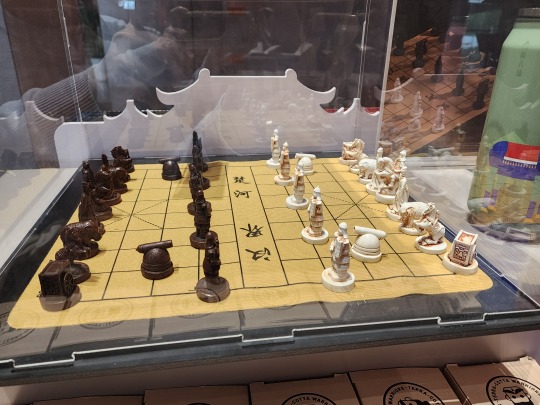
A blind box set of small figurines that are supposed to mimic Shang and Zhou era animal-shaped bronze vessels. Fun fact, in Shang dynasty people revered owls, and there was a female general named Fu Hao/妇好 who was buried with an owl-shaped bronze vessel, so that's why this set has three different owls (top left, top right, and middle). I got one of these owls (I love birds so yay!)
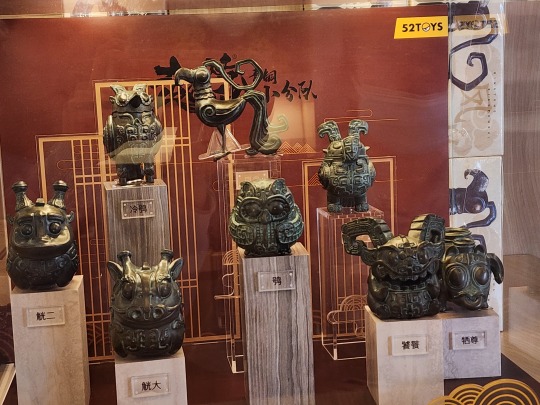
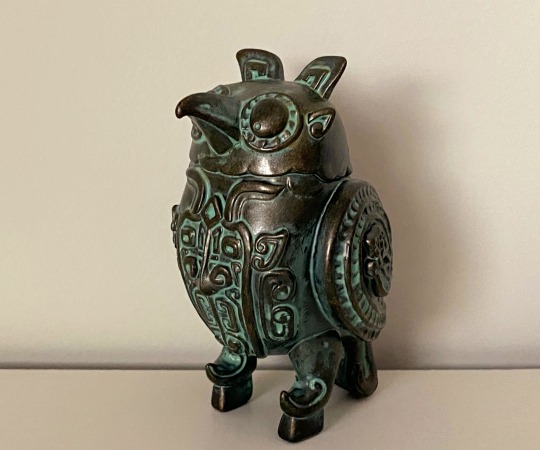
And that concludes the museums I visited while in Xi'an!
#2024 china#xi'an#china#shaanxi history museum qin and han dynasties branch#chinese history#chinese culture#chinese language#qin dynasty#han dynasty#warring states period#chinese philosophy#ancient technology#math history#history#culture#language
86 notes
·
View notes
Text




compiled whatever this is (and I run out of tag space)
meh HoT gifs (3/?)
#alek gifs#ninjago#ninjago krux#ninjago acronix#hands of time#time twins#alternate title to this series is : stuff i noticed after watching this season 10 whole times#okay actually thats a lie. i realized this the 3rd time around#i think of acronix and how he barely makes any decisions for himself and i go crazy#ppl equate that with him feeling forced to do stuff.. uh hes always been a follower guys!!#cue him calling wu “master wu” even after the twins betrayal. him liking machia bc shes “mean” and bossy#he has no issue with following orders lol. prepare for a long acronix rant one day#contexts -> gif 1 barely counts i just wanted to include him looking at krux. he does this a lot during that fight#gif 2 is before they kill blunck and raggmunk (idk how to spell their names still ... sorry)#gif 3 is before they were going to kill wu in the golden hour legacy short. which is canon !!#gif 4 is before they sent themselves into the temporal vortex#that one post that was like “are we still doing revenge? yeah? cool” bc thats basically acronix#there is something fundamentally wrong with these two's brains but idk how to describe it#krux who literally lost his mind after losing his brother to the point he adopted an entire identity#“he just needed to go undercover!!” counter point as soon as acronix came back he was unable to pretend to be saunders. he acted super weird#like when kai was in the museum he couldnt pretend to be this person he wasnt. acronix was back !!! so was he. krux was 100% going to kill#the smith sibs if maya and ray didnt comply. also.. canonly they knew him when they worked as teachers back in s3. he watched them grow up#and pretended all was well meanwhile their parents were being forced to work and slave away to build the iron doom. he is not normal#then you have acronix who thrives off of violence and is described as throwing himself into battle like a blunt object. has no regard#for himself as a person and just takes (almost) everything his brother says as gospel. s7 couldve done smthn really cool with how#the only thing the twins ever really disagreed on was technology. also ive went on a semirant about how krux's hatred for tech was misplaced#hatred for losing acronix. wanted to travel to the pre modern era? okay well whyd he pick 40 years ago specifically. also NOTE that they#went back after their past selves had lost. they wouldve faired better if they went and helped their past selves. also the reversal blade#had already fallen so when the twins went back in time there was two kruxes. he literally went back to when he had been all alone for the#for the first time. he went back to when his life was ruined and his brother was gone!! but he had nix with him this time . ughdhf
46 notes
·
View notes
Text

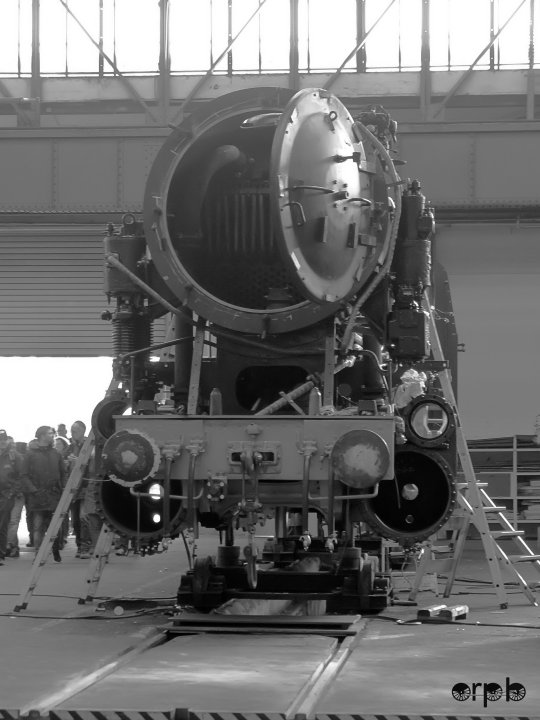
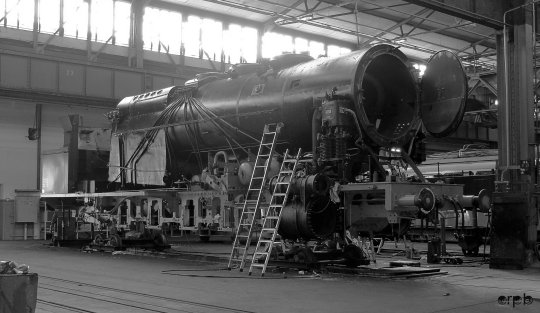
95 027 im Dampflokwerk Meiningen
#dampflokblog.de#Meiningen#steam train#dampflok#95 027#railway#stoom locomotief#steam locomotive#eisenbahn#локомотив#lokomotywa#locomotive à vapeur#鉄道#Railway Museums & Depots#Eisenbahn#Railway#BWPhotography#black & white photography#Dampfzugtechnik#Steam train technology
143 notes
·
View notes
Photo
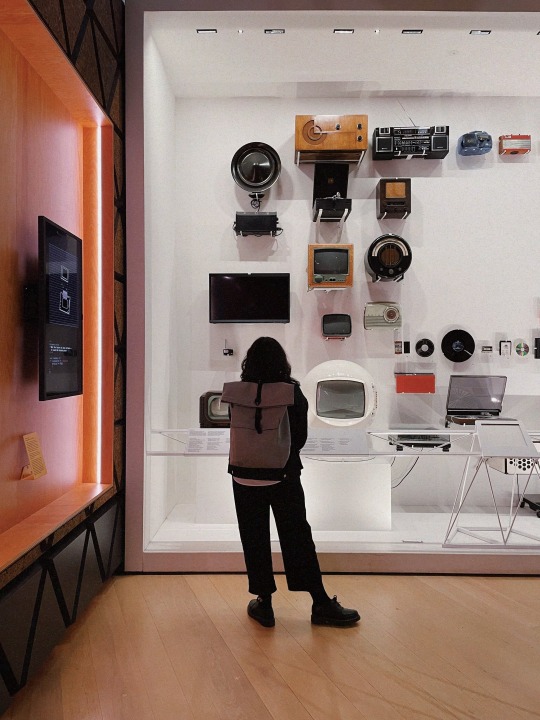

I love her and I love the Design Museum 🥰
#and I love love#studyblr#studygram#studyspo#art#artblr#artspo#design#designblr#museum#gallery#l#aesthetic#colourful#objects#technology#books#bookblr#booklr#bookstagram#spring#london
492 notes
·
View notes
Text



A few more pictures from my visit to the Col. James M. Schoonmaker, a freighter museum ship that began her life at Great Lakes Engineering Works of Ecorse, Michigan, in 1911. She carried coal on her maiden voyage from Toledo, Ohio to Sheboygan, Wisconsin.
She was actively sailing the Great Lakes until 1980, and of course she was updated and refitted to work for so many decades. But a lot of furniture on board is original: they never bothered to replace her apparently indestructible, very heavy wood furniture from before the Great War. You wouldn't know it was so old. The table and chairs are 1911 orginals, the captain's cabin and few guest rooms are still nicely appointed.


#maritime history#colonel james m schoonmaker#great lakes#museum ship#freighter#national museum of the great lakes#toledo#ohio#there is a lot of 1950s-1970s technology aboard her#she was also repowered by the american ship building co. in 1952#age of steam#lake freighter
20 notes
·
View notes
Text
Tamagotchi Connection Featured at Stockholm Museum of Technology

image source: thepinkyclone on Reddit
Tamagotchi hits a museum in Sweden! Otherwise known as Tekniska Museet, the Museum of Technology located in Stockholm, Sweden. The museum is the largest museum of technology, has an exhibit with vintage technology, which includes a display of the original Nintendo Game Boy, some games, and a Tamagotchi Connection, it looks like a V2 Clear Pink shell. It is interesting to see the sign mention Tamagotchi and the year of 1997, but show a device from 2005.
#tamapalace#tamagotchi#tmgc#tamagotchiconnection#tamagotchi connection#connection#tamatag#virtualpet#bandai#stockholm#sweden#se#museum#museumoftechnology#museum of technology#tekniskamuseet#tekniska museet
24 notes
·
View notes
Text










CHP Plant 1 🏭 (EC 1), Łódź, Poland
#aesthetic#cyberpunk#tech#tech aesthetic#electricity#engineering#elektrostantsiyapost#power plant#chp plant#turbine#generator#boiler#coal power plant#technology#industrial#tech museum#power generation#steam turbine#electrical engineering#power engineering#cooling towers#circuits#steam drum#pump#deaerator#synchronizer#old tech#vintage#electrical engineer#electrical
42 notes
·
View notes
Text





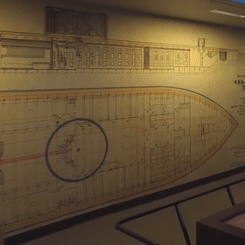

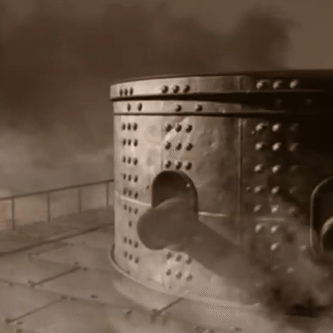

⚓ ⚓ ⚓
🛥️ 🛥️ 🛥️
🛟 🛟 🛟
24. An interesting moment in history: THE USS MONITOR. and ironclads in general but i specifically love the uss monitor so so much. cool ass boat.
#sorry for the lack of image ids. i dont know how to describe these#you dont ask questions about project mayhem [boards]#deliver me from being perfect and complete [queue]#the same decaying organic matter as everything else [gifs]#monitor#history#boats#ships#technology#model#water#museum#metal#gray#brown#stim#stim gif#stimboard
24 notes
·
View notes
Text
man how come japan gets all the cool shit? like some of the shit there is like so fucking epic! and i’m not talking about like anime stuff, i’m talking about shit like the cool ass NINTENDO MUSEUM or the fucking AMAZING DIGITAL CIRCUS RESTAURANT! not to mention the other cool shit like the GODZILLA STATUE or the fact that they’re living like 20 years in the future! like have you seen some of the shit going on over there?! like i hear about something so fucking epic sounding, but guess what, ITS IN JAPAN! like how come other countries get like none of the cool shit man?! i just wanna go eat at the amazing digital circus or go to a nintendo museum, why ya gotta do me so dirty?
#Yes I know there are reasons why Japan is so cultured and technologically advanced but I want cool shit too#the amazing digital circus#japan#godzilla#nintendo#nintendo museum#gooseworx
8 notes
·
View notes
Text
#i come at this with no agenda no not at all i definitely haven't written countless letters to MPs trying to save a similar museum no....#there's no reason i am tagging this#powerhouse museum#i could be thinking about any#museum#like#questacon#or the#Museum of Science and Industry#or maybe im thinking of#London Science Museum#it could be any#technology museum#or#science museum#It's going to be the Tumblr#Museum of Applied Arts and Sciences#and we will never let a CEO earn half a million a year while she denies funds for essential maintenance and strips out educational content#if i had more spots i would have added in one for the history of communications exhibit and#the Emergence of AI exhibit the old founding director proposed but as you can tell#i am very much grinding an axe right now
27 notes
·
View notes
Text
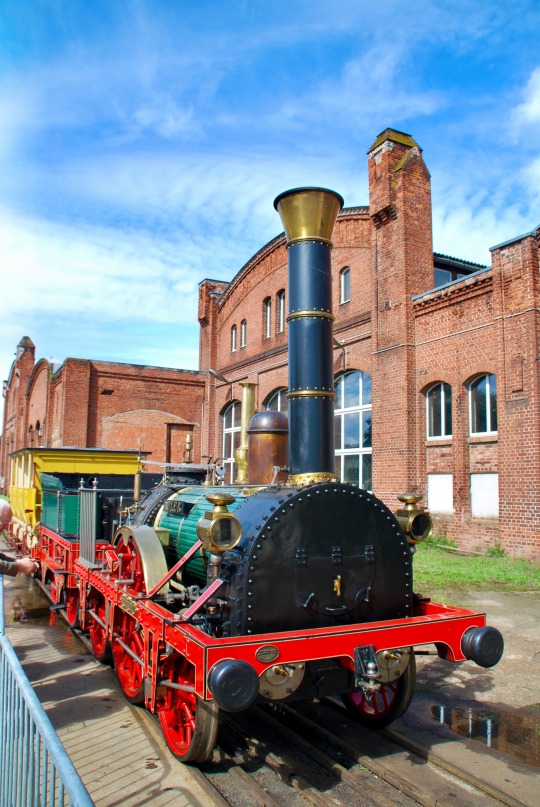
A picture of the famous German loco "Adler" ("Eagle"). It was the first steam locomotive to operate in Germany in 1835, built by George Stevenson in England. As the original loco was scrapped before 1900, the loco depicted here has been rebuilt in 1935 to celebrate 100 years of railways in Germany.
* * * * * * * * * *
Ein Foto der berühmten Dampflokomotive „Adler“, der ersten Dampflok Deutschlands. Sie wurde 1835 vom englischen Lokomotivbauer George Stevenson gebaut. Da das Original leider schon vor 1900 verschrottet wurde, ist auf dem Bild der Nachbau von 1935 zu sehen.
📸 Mine, in Meiningen.
#railway#eisenbahn#history of technology#steam locomotive#steampunk#history#museum#technology#machinery#retro#trains
61 notes
·
View notes